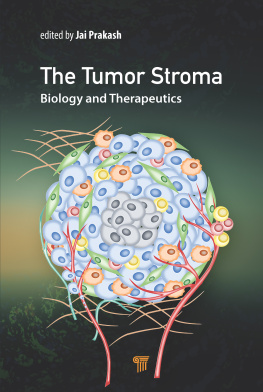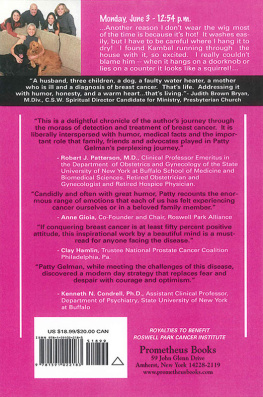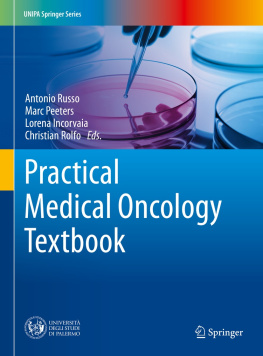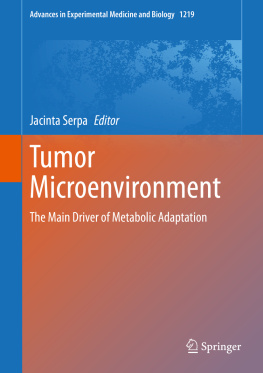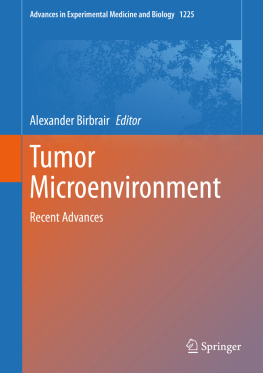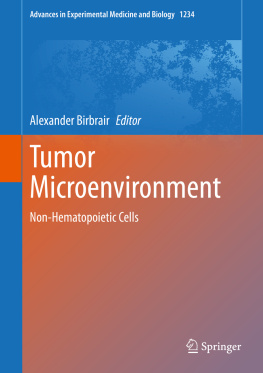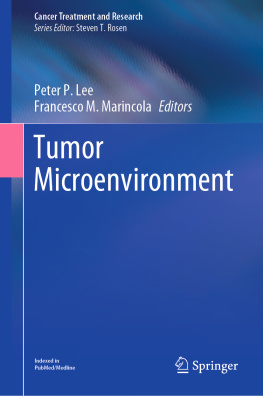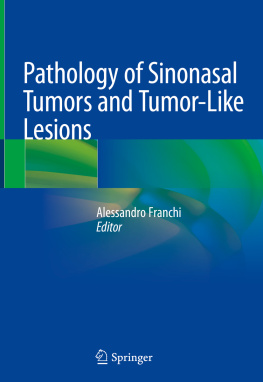Contents
Landmarks
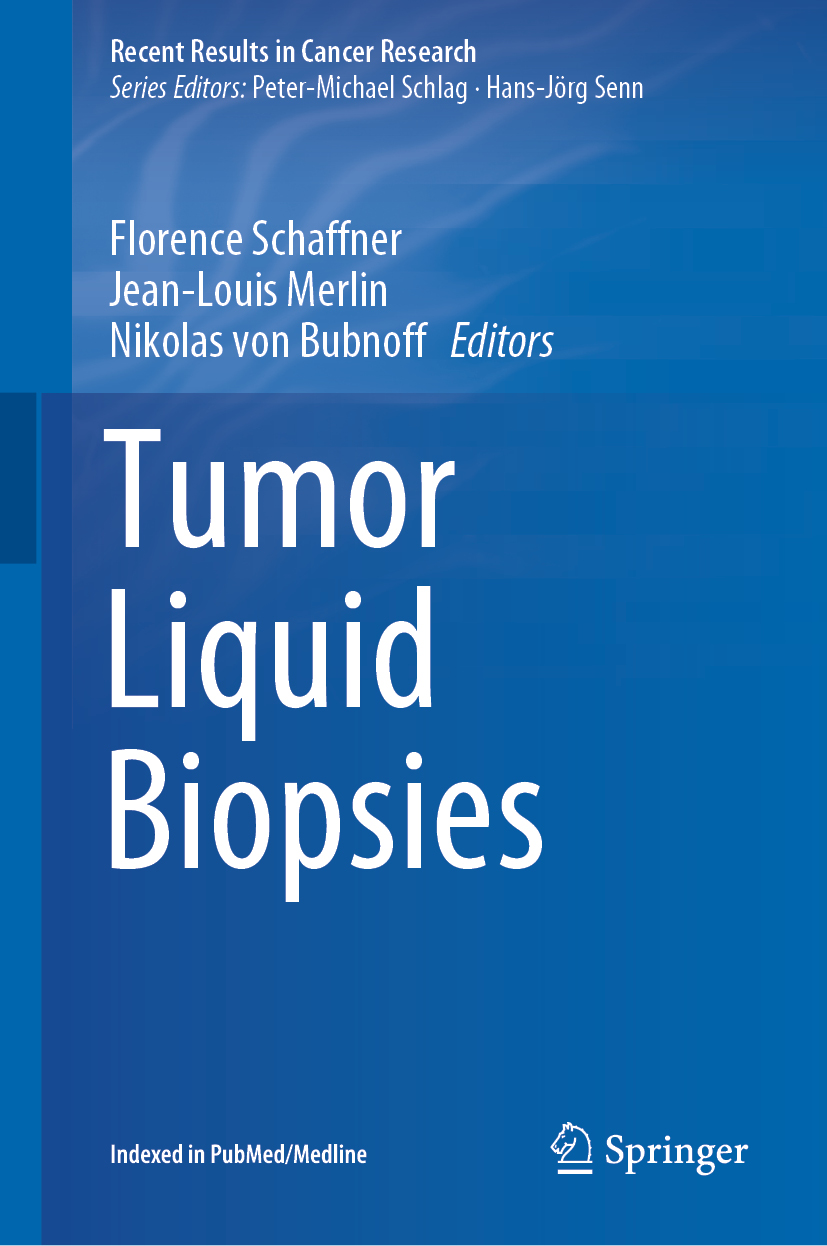
Volume 215
Recent Results in Cancer Research
Series Editors
Peter-Michael Schlag
Charite Campus Mitte, Charite Comprehensive Cancer Center, Berlin, Germany
Hans-Jrg Senn
Tumor- und Brustzentrum ZeTuP, St. Gallen, Switzerland
More information about this series at http://www.springer.com/series/392
Editors
Florence Schaffner , Jean-Louis Merlin and Nikolas von Bubnoff
Tumor Liquid Biopsies
Editors
Florence Schaffner
Cancrople Est, Strasbourg, France
Jean-Louis Merlin
Institut de Cancrologie de Lorraine, CNRS UMR7039 CRAN Universit de Lorraine, Vanduvre-ls-Nancy, France
Nikolas von Bubnoff
Department of Hematology and Oncology, Medical Center, University of Schleswig-Holstein, Lbeck, Germany
ISSN 0080-0015 e-ISSN 2197-6767
Recent Results in Cancer Research
ISBN 978-3-030-26438-3 e-ISBN 978-3-030-26439-0
https://doi.org/10.1007/978-3-030-26439-0
Springer Nature Switzerland AG 2020
This work is subject to copyright. All rights are reserved by the Publisher, whether the whole or part of the material is concerned, specifically the rights of translation, reprinting, reuse of illustrations, recitation, broadcasting, reproduction on microfilms or in any other physical way, and transmission or information storage and retrieval, electronic adaptation, computer software, or by similar or dissimilar methodology now known or hereafter developed.
The use of general descriptive names, registered names, trademarks, service marks, etc. in this publication does not imply, even in the absence of a specific statement, that such names are exempt from the relevant protective laws and regulations and therefore free for general use.
The publisher, the authors and the editors are safe to assume that the advice and information in this book are believed to be true and accurate at the date of publication. Neither the publisher nor the authors or the editors give a warranty, expressed or implied, with respect to the material contained herein or for any errors or omissions that may have been made. The publisher remains neutral with regard to jurisdictional claims in published maps and institutional affiliations.
This Springer imprint is published by the registered company Springer Nature Switzerland AG
The registered company address is: Gewerbestrasse 11, 6330 Cham, Switzerland
Contents
Circulating Tumor Cells (CTC)
Tilman Todenhfer , Klaus Pantel , Arnulf Stenzl and Stefan Werner
Mert Boya , Chia-Heng Chu , Ruxiu Liu , Tevhide Ozkaya-Ahmadov and Ali Fatih Sarioglu
Michael Paul Kolinsky , Nikolas Stoecklein , Maryou Lambros , Veronica Gil , Daniel Nava Rodrigues , Suzanne Carreira , Zafeiris Zafeiriou and Johann Sebastian de Bono
Mark Kalinich , Tanya T. Kwan , Mehmet Toner , Daniel A. Haber and Shyamala Maheswaran
Kevin Keomanee-Dizon , Stephanie N. Shishido and Peter Kuhn
Francesca Chemi , Sumitra Mohan and Ged Brady
Diana H. Liang , Carolyn Hall and Anthony Lucci
Erin F. Cobain , Costanza Paoletti , Jeffrey B. Smerage and Daniel F. Hayes
Circulating Tumor DNA (ctDNA)
Nickolas Papadopoulos
Pauline Gilson
Florian Scherer
Florian Clatot
Alexandre Harl
Joana Vidal , Alvaro Taus and Clara Montagut
Circulating Tumor RNA, Exosomes
Gitte Brinch Andersen and Jrg Tost
Sabrina Mller , Florian Janke , Steffen Dietz and Holger Sltmann
Irina Nazarenko
Bioinformatics
Francesco Marass , Francesc Castro-Giner , Barbara Maria Szczerba , Katharina Jahn , Jack Kuipers , Nicola Aceto and Niko Beerenwinkel
Part I Circulating Tumor Cells (CTC)
Springer Nature Switzerland AG 2020
F. Schaffner et al. (eds.) Tumor Liquid Biopsies Recent Results in Cancer Research https://doi.org/10.1007/978-3-030-26439-0_1
Pathophysiology of Tumor Cell Release into the Circulation and Characterization of CTC
Tilman Todenhfer
(1)
Department of Urology, Eberhard-Karls-University, Tuebingen, Germany
(2)
Department of Tumor Biology, University Medical Center Hamburg-Eppendorf, Hamburg, Germany
The traditional model of metastatic progression postulates that the ability to form distant metastases is driven by random mutations in cells of the primary tumor. These mutations remain rare until clonally expanded and selected at secondary metastatic sites (Fidler and Kripke ).
Role of Epithelial-to-Mesenchymal Transition for Tumor Cell Release
Different studies with preclinical models have shown that EMT is a central process in the progression of solid cancers (De Craene and Berx ).
Role of Cancer Stem Cells in Metastatic Progression
As already mentioned above, CTC characteristics of both EMT and stemness are closely related and considered to be of major importance for metastatic progression. In benign tissues, stem cells are a rare, slow-proliferating cell type with special biological characteristics. In this connection, their capabilities to self-renew and to differentiate into different type of cells are of particular importance. Generally, these features allow stem cells to eventually undergo extensive proliferation while preserving an undifferentiated, plastic cell state that helps to sustain tissue homeostasis (Clevers ). In summary, the CSC hypothesis yields important suggestions for cancer therapy and tumor diagnosis because it has implications for major clinical problems including therapy resistance and distant metastasis formation. Thus, just like for EMT traits, great attention has been paid on comprehensive analyses of CTC heterogeneity and identification of stem-like CTC subpopulations in patient-derived blood samples.
Principles of Enrichment and Analysis for Mesenchymal-like CTC
At present, various assays utilizing different methodical concepts are used for the enrichment and characterization of CTC. Many platforms are using antibodies that are recognizing epitopes of epithelial- or cancer-specific proteins. These antibodies are usually coupled to immunomagnetic beads or nanoparticles allowing CTC enrichment based on the expression of the corresponding antigens (Schilling et al. ).
Prognostic and Clinical Relevance of Mesenchymal Marker Expression on CTC
In the setting of identifying CTC with mesenchymal differentiation, several proteins have been discussed and used most frequently as markers for CTC analysis. In mesenchymal cells, the vimentin protein is a major component of the cytoskeleton and acts as a molecular determinant for cellular motility. As such, it regulates cellular integrity, stabilizes interactions within the cytoskeleton, and mediates durability toward mechanical stress. In various preclinical and translational studies, it has been shown that the expression of vimentin in tumor cells is associated with the development of metastases (Hu et al. ).


